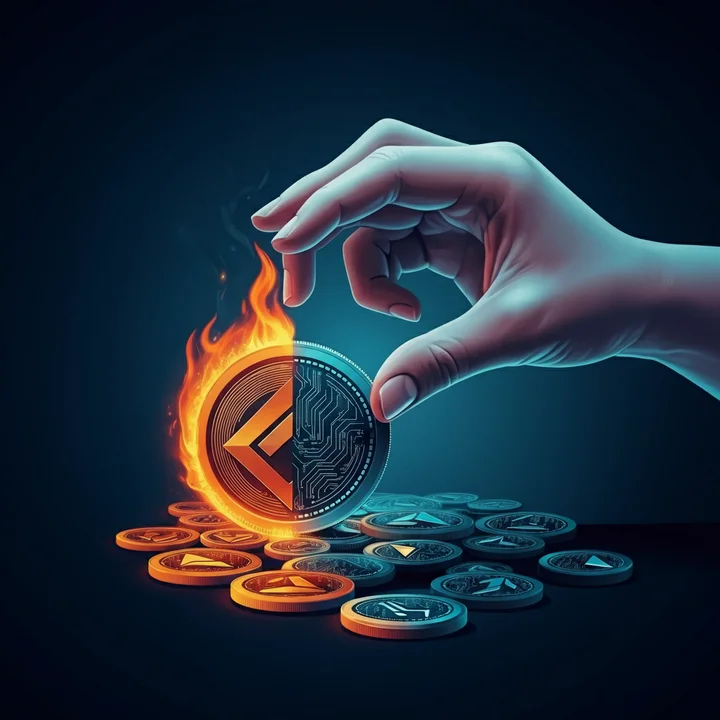The world of cryptocurrency can often feel overwhelming to newcomers, with its complex jargon and fast-paced innovations. Among these terms, one that's frequently highlighted is tokenomics. But what does it mean, and why does it matter? Tokenomics is a crucial lens through which crypto investors, developers, and users evaluate the long-term success of blockchain projects.
This comprehensive guide explains the core concepts of tokenomics, dives into key elements like supply mechanics and token utility, and explores real-world examples to help you understand what makes or breaks a cryptocurrency’s design. By the end, you’ll have the tools to critically assess any crypto project’s token model and make more informed decisions.
What Is Tokenomics, and Why Is It Important?
At its core, tokenomics (a blend of "token" and "economics") refers to the study of how cryptocurrencies and tokens operate within their ecosystem. This involves analyzing the design, distribution, circulation, supply, and functionality of the tokens that underpin blockchain projects.
Why is tokenomics important? Because it greatly influences the success or failure of a cryptocurrency. A project with poorly thought-out tokenomics may face issues like inflation, low demand, or unsustainable rewards systems, making it unattractive to users and investors. Conversely, robust tokenomics can drive value, foster community, and ensure a project’s long-term sustainability.
Key Elements of Tokenomics
Understanding tokenomics begins with studying its fundamental components. Here are the most important concepts you need to be familiar with:
Total Supply vs Circulating Supply
One of the first aspects investors analyze in tokenomics is supply mechanics. Supply plays a significant role in determining a token’s value and market behavior.
Total Supply refers to the maximum number of tokens that will ever exist for a cryptocurrency. For example, Bitcoin has a fixed total supply of 21 million coins, which creates scarcity and enhances its value over time.
Circulating Supply, on the other hand, represents the number of tokens currently available and being traded in the market. This number is always less than or equal to the total supply.
When evaluating a token, it’s essential to understand how the circulating supply influences market price. A token with a low circulating supply may see high price volatility, while one with an inflated supply could face challenges holding significant value.
Inflation vs Deflation
Another critical factor in tokenomics is how supply changes over time, which can be inflationary or deflationary in nature:
Inflationary Tokens gradually increase their supply. For example, Ethereum undergoes consistent issuance of new coins through validator rewards. While inflation can encourage spending and network utility, excessive inflation risks diluting a token’s value over time.
Deflationary Tokens, like Bitcoin, reduce their issuance over time through programmed events such as "halvings," which cut mining rewards periodically. This scarcity model often attracts investors seeking long-term asset appreciation.
Understanding whether a project’s token model leans toward inflationary or deflationary dynamics can give you insight into its long-term growth potential.
Utility and Governance Tokens
Tokens generally fall into one of two broad categories based on their primary function:
Utility Tokens
Utility tokens are designed for specific uses within a given ecosystem. For instance:
- BNB (Binance Coin) allows users to pay discounted trading fees on the Binance platform.
- Filecoin (FIL) powers decentralized file storage by being used as a medium for paying and rewarding storage providers.
The value of a utility token depends on the demand for its underlying service. If the service sees widespread adoption, the token becomes more useful and valuable.
Governance Tokens
Governance tokens grant holders voting rights, allowing them to participate in a blockchain project’s decision-making. For example:
- Uniswap (UNI) token holders vote on changes to the project’s decentralized exchange protocol.
- Maker (MKR) allows its community to govern aspects of the MakerDAO ecosystem.
Governance tokens often appeal to those who want a say in shaping the future of a project, giving them a stake in its success.
Case Studies of Tokenomics in Action
To better understand how tokenomics works, let's look at a few real-world examples:
Bitcoin (BTC)
Tokenomics Highlight: Fixed supply of 21 million coins.
Bitcoin’s scarcity is one of its strongest selling points. With no more than 21 million coins ever being mined, Bitcoin has positioned itself as a digital form of gold, appealing to both individual investors and institutions.
Ethereum (ETH)
Tokenomics Highlight: Transition to deflationary dynamics with Ethereum 2.0.
Following the Ethereum Merge, Ethereum shifted to a Proof-of-Stake (PoS) mechanism, where ETH is burned through transaction fees. This has the potential to make Ethereum a deflationary asset under certain network conditions.
Binance Coin (BNB)
Tokenomics Highlight: Quarterly token burns.
Binance uses a portion of its profits to repurchase and "burn" BNB tokens, decreasing the total supply and driving up scarcity-driven demand.
These examples show how unique tokenomics strategies can directly impact a project’s adoption and success.
Red Flags in Tokenomics
Not all projects are created equal, and sometimes you’ll encounter red flags in tokenomics design. Here's what to watch out for:
Excessive Token Pre-Mining: If a project allocates a disproportionate amount of tokens to insiders, founders, or advisors, it could lead to centralization or large sell-offs later.
No Clear Use Case: Projects without meaningful utility for their tokens are unlikely to sustain demand or long-term value.
Uncapped or Aggressive Inflation: Tokens that continuously increase supply without a check-and-balance mechanism risk becoming overinflated and losing value.
Lack of Transparency: Reliable crypto projects publish transparent documentation about their tokenomics, including distribution plans and supply schedules.
How to Evaluate a Project’s Token Model
Evaluating a project’s token model is crucial before investing or engaging with any cryptocurrency. Here are some actionable steps:
Read the Whitepaper
A crypto project’s whitepaper often outlines its vision, goals, and tokenomics. Pay close attention to the total supply, utility, distribution plan, and issuance schedule.
Assess Token Utility
Understand how the token will be used within the ecosystem. Does it solve a real problem or provide meaningful value to users?
Analyze Distribution
Look into how tokens are allocated across founders, advisors, investors, and the community. A well-distributed project reduces centralization risks.
Consider Future Supply Dynamics
Examine whether the tokenomics favor inflationary, deflationary, or hybrid policies. Scalability and long-term sustainability are vital.
Research the Team and Roadmap
Evaluate whether the team has the expertise to execute the project’s goals, and check if the roadmap aligns with realistic tokenomics strategies.
Unlock the Potential of Tokenomics
Tokenomics is a fascinating and powerful aspect of cryptocurrency that plays a critical role in determining the success of blockchain projects. By understanding foundational principles like supply mechanics, token utility, inflation dynamics, and governance, you gain the ability to distinguish strong projects from questionable ones.
Want to improve your knowledge further? Stay informed and explore opportunities in crypto with a careful eye on tokenomics. With this guide, you’re better equipped to make smarter decisions in the dynamic and rapidly evolving world of blockchain.

